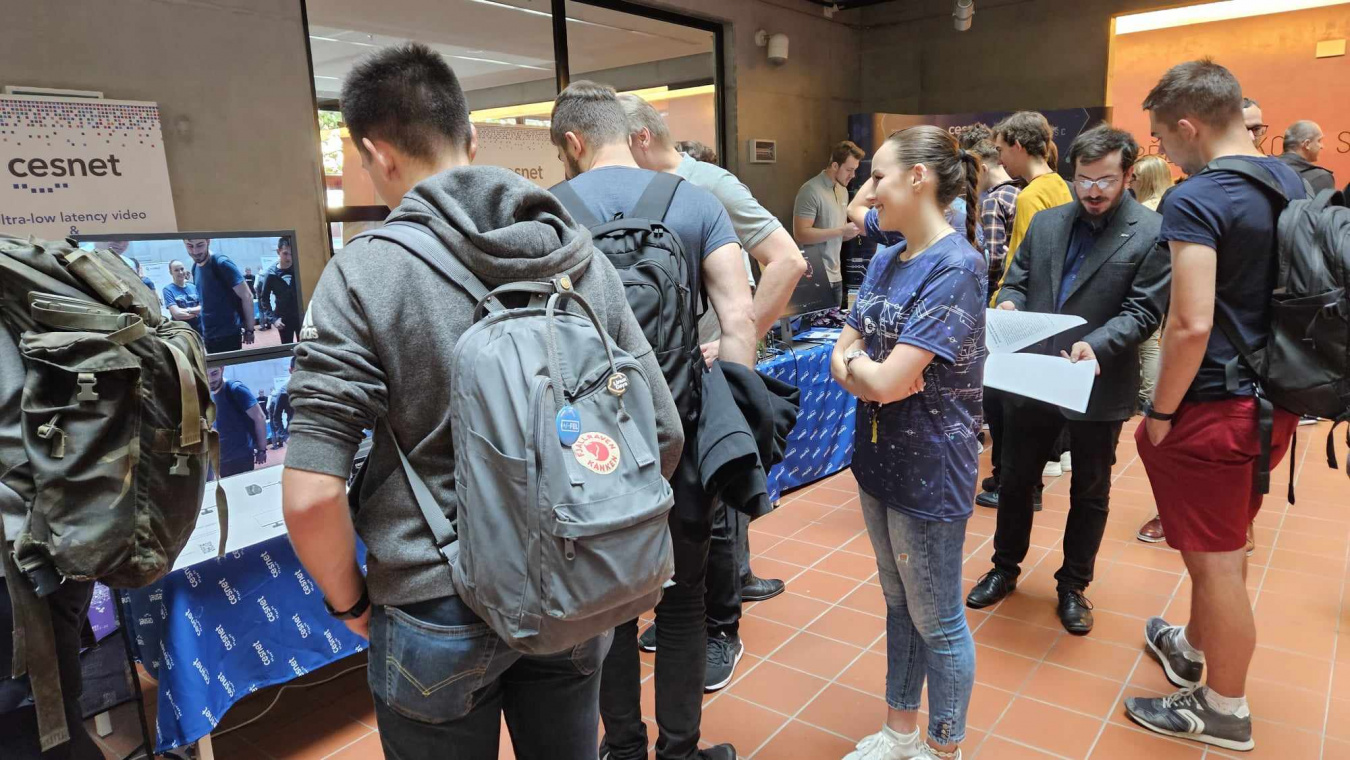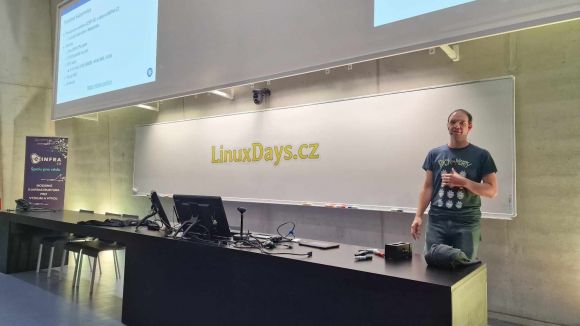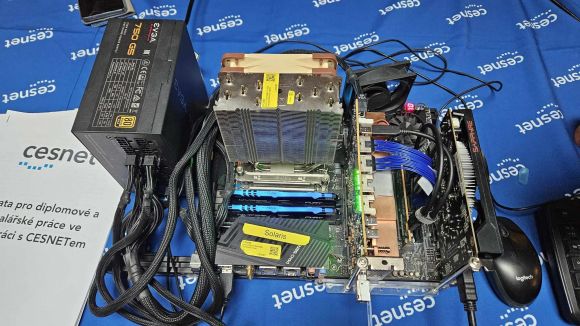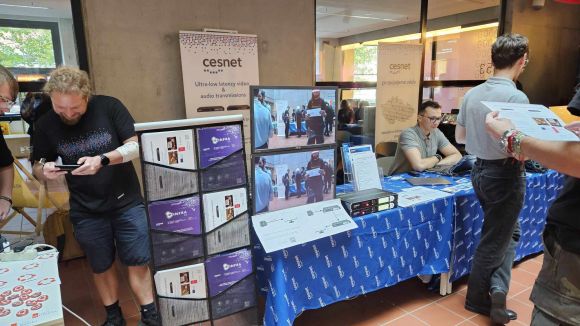Premiere of e-INFRA CZ at Linux Days 2023

At this year's Linux Days CESNET presented itself in the colours of the e-INFRA CZ consortium. Together with our partners, CERIT-SC from Brno and IT4I from Ostrava, we have introduced a range of services for demanding computations, data storage and complex multimedia environment for collaboration of scientists and research teams. In addition to the services on offer, the numerous visitors to the stand were also interested in job offers and the topics of bachelor's and master's theses. The knowledge quiz was a great success, in which it was possible to win interesting prizes.
The e-INFRA CZ services were also presented in the lecture programme. Klára Moravcová spoke on Beskar cloud – Openstack over Kubernetes, and Lukáš Hejtmánek focused on Kubernetes for computing and science. Michal Strnad chose the topic Tape library vs object technology: Fighting for space-time warehouse space, and finally Tomáš Čejka prepared a lecture on Quo vadis, ipfixprobe, in which he introduced a software tool for calculating statistical properties of network traffic.
Teams with demonstrations of our technologies faced the onslaught of visitors. The latest technologies developed by us were on display at the booth including the 400 GbE acceleration card for monitoring high-speed network traffic, DDOS protector application protecting against DDOS attacks and MVTP device for low latency traffic, for the development of which CESNET won the Czech Head award last year.
The 400 GbE acceleration card was presented by our colleagues Jakub Cabal, Martin Špinler and Daniel Kondys. The card is used for high-speed network traffic, network monitoring and network security monitoring. The DDOS protector tool was demonstrated by Kamil Vojanec and David Vodák, and they explained the methods of mitigating threats. The insight of the visitors was tested by colleagues Sven Ubik, Jiří Melnikov and Martin Kolbe, who presented the low-latency MVTP equipment. It was possible to watch the same shot on two screens. One was connected directly to the camera, the other was connected via the MVTP device over the network. Visitors could guess which image was being transmitted and which was coming directly from the camera. And it wasn't easy. For most, the delay was not visible. It is therefore used for distance collaboration, distributed concerts and events.
Recordings of the presentations here.











